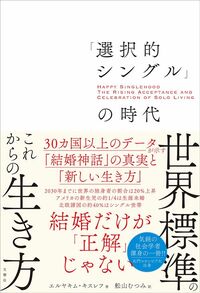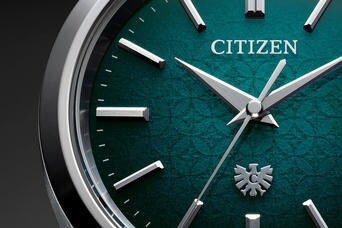だから結婚率が下がっている
第一に、人々はそのリスクにちゃんと気づいており、それに対する反応として、結婚率が下がっているのだ。特に、人々が自分の個人的なニーズをよく認識し、自分で自分の人生を選ぶことができると考えている個人主義的な社会では、そうなっている。
第二の答えはこうだ。人々はリスクとメリットをちゃんと比較して考えてみようとしてはいる。だが、そういう人たちにとっても、長期的なリスクを察知し、試算することは難しいのだ。このことは、これまでの研究結果からも明らかだ(※18)。
年金問題においては、これは「近視眼的問題」と呼ばれており、その結果、多くの国の政府が国民に対し、引退後のために貯金をすることを合法的に強制している。結婚に関しても、これと同じことがいえるかもしれない。短期的なメリットに目がくらんで、長期的なリスクを考えることのできない人が多いのだ。
長期的な研究からすれば、結婚は幸福感を高めるためには短期的な要因にしかならない。結婚する人たちは結婚前後の時期にだけ結婚の恩恵に与り、その効果は約2年後には低下し(※19)、遠い将来にはリスクが待ちかまえている。この点は年齢の高い人の場合には特に当てはまる。彼らのほとんどにとって、結婚の一時的な効果ははるか昔のことになっているからだ。
幸福に年をとるために学ぶべきこと
以上の事柄をすべて考えあわせると、結婚をシニア期における孤独に対しての唯一のソリューションだとみなすのはやめるべきだということになる。
パートナーなしで幸福に年をとるという選択肢からも、学ぶべきことがあるということだ。結婚したことのない人たちはそういう生き方にずっと適応してきているわけだが、彼らの生き方は、離婚した人たちや配偶者に先立たれた人たちにとっては、見習うことのできるひとつの例にすぎない。
これら3つのグループのすべての人たちが、パートナーなしにいつまでも幸せに暮らすための戦略を採用することができるはずだ。
1. Steven Stack, “Marriage, Family and Loneliness: A Cross-national Study”, Sociological Perspectives 41, no. 2(1998): 415‒32.
2. Helena Znaniecki Lopata, “Loneliness: Forms and Components”, Social Problems 17, no. 2 (1969): 248‒62;Matthijs Kalmijn and Marjolein Broese van Groenou, “Differential Effects of Divorce on Social Integration”,Journal of Social and Personal Relationships 22, no. 4 (2005): 455‒76.
3. Bella DePaulo, Marriage vs. Single Life: How Science and the Media Got It So Wrong (Charleston, SC:DoubleDoor Books, 2015).
4. Christina M. Gibson-Davis, Kathryn Edin, and Sara McLanahan, “High Hopes but Even Higher Expectations:The Retreat from Marriage among Low-Income Couples”, Journal of Marriage and Family 67, no. 5 (2005):1301‒12; Maureen R. Waller and Sara S. McLanahan, “‘His’ and ‘Her’ Marriage Expectations: Determinants and Consequences”, Journal of Marriage and Family 67, no. 1 (2005): 53‒67.
5. Alois Stutzer and Bruno S. Frey, “Does Marriage Make People Happy, or Do Happy People Get Married?” Journal of Socio-economics 35, no. 2 (2006): 326‒47.
6. Paul R. Amato, “Research on Divorce: Continuing Trends and New Developments”, Journal of Marriage and Family 72, no. 3 (2010): 650‒66; Betsey Stevenson and Justin Wolfers, Marriage and Divorce: Changes and Their Driving Forces (Cambridge, MA: National Bureau of Economic Research, 2007).
7. Rose McDermott, James H. Fowler, and Nicholas A. Christakis, “Breaking Up Is Hard to Do, Unless Everyone Else Is Doing It Too: Social Network Effects on Divorce in a Longitudinal Sample”, Social Forces 92, no. 2(2013): 491‒519.
8. Renee Stepler, Led by Baby Boomers, Led by Baby Boomers, divorce Rates Climb for America’s 50+ Population (Washington, DC:Pew Research Center, 2017).
9. Dan, response to “Aging Alone Doesn’t Have to Mean Lonely”, Senior Planet , January 25, 2017,
10. R.S. Weiss, Loneliness: The Experience of Emotional and Social Isolation (Cambridge, MA: MIT Press, 1973).
11. Nancy E. Newall, Judith G. Chipperfield, Rodney A. Clifton, Raymond P. Perry, Audrey U. Swift, and Joelle C. Ruthig, “Causal Beliefs, Social Participation, and Loneliness among Older Adults: A Longitudinal Study”, Journal of Social and Personal Relationships 26, no. 2‒3 (2009): 273‒90; Thomas Scharf, Chris Phillipson, and Allison E. Smith, “Social Exclusion of Older People in Deprived Urban Communities of England”, European Journal of Ageing 2, no. 2 (2005): 76‒87.
12. Jonathan Drennan, Margaret Treacy, Michelle Butler, Anne Byrne, Gerard Fealy, Kate Frazer, and Kate Irving, “The Experience of Social and Emotional Loneliness among Older People in Ireland”, Ageing & Society 28, no.8 (2008): 1113‒32; Pearl A. Dykstra, and Tineke Fokkema, “Social and Emotional Loneliness among Divorced and Married Men and Women: Comparing the Deficit and Cognitive Perspectives”, Basic and Applied Social Psychology 29, no. 1 (2007): 1‒12.
13. Marja Aartsen and Marja Jylhä, “Onset of Loneliness in Older Adults: Results of a 28 Year Prospective Study”, European Journal of Ageing 8, no. 1 (2011): 31‒38; Lena Dahlberg and Kevin J. McKee, “Correlates of Social and Emotional Loneliness in Older People: Evidence from an English Community Study”, Aging & Mental Health 18, no. 4 (2014): 504‒14.
14. Christopher J. Einolf and Deborah Philbrick, “Generous or Greedy Marriage? A Longitudinal Study of Volunteering and Charitable Giving”, Journal of Marriage and Family 76, no. 3 (2014): 573‒86; Naomi Gerstel and Natalia Sarkisian, “Marriage: The Good, the Bad, and the Greedy”, Contexts 5, no. 4 (2006): 16‒21.
15. Naomi Gerstel and Natalia Sarkisian, “Marriage: The Good, the Bad, and the Greedy”, Contexts 5, no. 4 (2006):16‒21.
16. Ed Diener and Martin E.P. Seligman, “Very Happy People”, Psychological Science 13, no. 1 (2002): 81‒84.
17. Naomi Gerstel, “Divorce and Stigma”, Social Problems 34, no. 2 (1987): 172‒86.
18. Helmuth Cremer and Pierre Pestieau, “Myopia, Redistribution and Pensions”, European Economic Review 55,no. 2 (2011): 165‒75.
19. Bella DePaulo, Marriage vs. Single Life: How Science and the Media Got It So Wrong (Charleston, SC:DoubleDoor Books, 2015); Alois Stutzer and Bruno S. Frey, “Does Marriage Make People Happy, or Do Happy People Get Married?” Journal of Socio-economics 35, no. 2 (2006): 326‒47.





